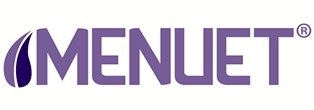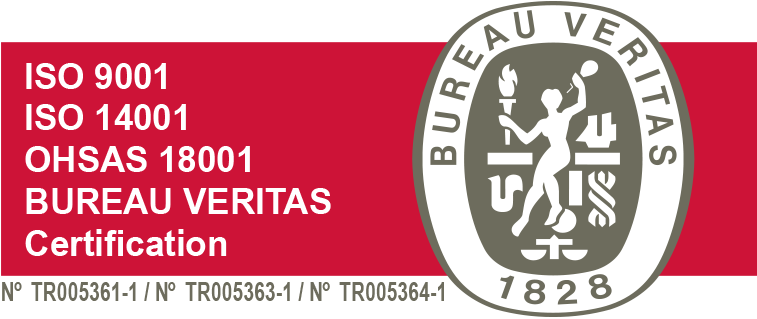Product Certificate and Label
| Name Of The Product | : | MENUET |
| Active Substance | : | 480 gr/L Spinosad |
| Formulation Form | : | Suspension Concentrate (SC) |
| Specification | : | A broad spectrum insecticide obtained by fermentation and efficient by stomach and contact. |
| Group | : | 5 INSECTICIDE |
| Environmental Impact | : | Toxic for bees if applied directly. However it has not toxic effect on bees after the product dries on the plant. Toxic for fish |
| Antidote | : | There is not a special antidote. Treatment will be made according the symptoms. |
Form Of Market Presentation: 0,1 L - 0,25 L
MODE OF PREPARATION FOR DRUG APPLICATION:
Before use, shake well the product. Fill half of the tank of the disinfestation device with water. First, you must mix well MENUET at the necessary dose in a separate bowl with some water so to get a paste that you add to the tank making the device mixer works. The empty bowl of the product and product measuring bowl must be well washed with water in the device tank. Water should be then added till the filling of the tank, making the mixer works. It is recommended to use clean water with pH 7 to prepare the solution. During the application, you must go on mixing the preparation or you must make the mixer work continuously.
MISCIBILITY:
MENUET must not be used with other products based alkaline or sulphur. It is recommended to the grower to try a pre-solution before mixing MENUET 1 to other products, at his own risks and under his responsibility. As MENUET is suitable to Integrated Pest Management (IPM), it can lose its benefits if mixed with a poisonous preparation.
MODE OF USE AND TIMING:
It is quite important to use MENUET at the right dosage to obtain the best result. As it solves immediately in water, it can be used with all type of equipment and devices for disinfestation. As MENUET is efficient through stomach and contact, it is necessary to pay attention to coat all the surface of the plant during application. The disinfestation against vineyard thrips must be done in the spring, when buds break, when first leaves appear and when the concentration of pest population reaches 2-3 thrips by leave.
For grape moth control in vineyard, the disinfestation must be made according to the system of alert estimation. For application of larvicide, the number of butterflies caught in the traps must begin to fall after reaching a pic. The effective temperature must be upon 15°C and up during two consecutive days in the late afternoon for a total of 120 days/degree in the first generation, and this situation must go on in the following days. Total effective temperatures for the 2nd generation must reach 520 day/degree, 1047 days/degree for the third generation, in phenology of the vineyard, the first disinfestation has to be made when the first larvae are observed at the bud stage. The second application should be made when the grapes are green and the third application when the grapes begin to get sweet. The disinfestation should be decided at the apparition of the first born larvae. Disinfestation must be done at every disinfestation.
In the peach moth control, disinfestation must be made as soon as the first larva damage in the fruit is observed or 10 days after the first adult start is seen.
For hazelnut worm control, disinfestation will be made when the diameter of the nuts are 3-4 mm large.
For tomato moth control, disinfestation must be made when first adults are observed in the traps, according to the dimensions of the area, by seeking eggs and larvae in the flowers, leaves, sprouts and stalks in minimum 100 plants. The disinfestation should be made when it is observed that 3 plants from 100 plants are contaminated with larvae and eggs. Control after disinfestation must be made 5-6 days after the application and if necessary, application should be repeated.
RESISTANCE MANAGEMENT:
MENUET Crop Protection Plant product is an insecticide classed Group 5 according to its mechanism of action. Repeated applications of the same group of crop protection insecticides lead to resistance development. For this reason, do not exceed the number of recommended applications of MENUET during the same season in order to avoid resistance development. In case applications need to be repeated, pay attention to use crop protection products with a different mechanism of action (apart from those of Group 5).
| PLANTS AND PESTS WHERE MENUET IS USED | |||
| PLANT NAME | PEST NAME | USED DOSAGE AND APPLICATION TIME |
PERIOD OF TIME BETWEEN THE LAST APPLICATION AND THE HARVEST |
| Vineyard | Grape moth (Lobesia botrana) |
10 ml/100 L water | 7 days |
| Tomatoes (in greenhouses) |
Cotton leaf moth (Spodoptera littoralis) |
30 ml / 100 L water | 3 days |
| Potatoes | Potato beetle (Leptinotarsa decemlineata) |
10 ml / decare | 3 days |
| Peppers (in greenhouses) |
Flower thrips (Franklinella occidentalis) |
20 ml / decare | 3 days |
| Eggplants (in greenhouses) |
Flower thrips (Franklinella occidentalis) |
20 ml / decare | 3 days |
| Cotton | Leaf moth (Spodoptera littoralis) |
25 ml / decare | 28 days |
| Bollworm (Helicoverpa armlgera) |
12,5 ml / decare | 28 days | |
| Small Mottled Widow moth(Spodoptera exiqua) |
25 ml / decare | 28 days | |
| Strawberries | Flower thrips (Franklinella Occidental, Frankliniella intnnsa) |
20 ml / decare | 3 days |
| Peaches | Peach moth (Anarsia lineatella) |
30 ml/100 L water | 14 days |




